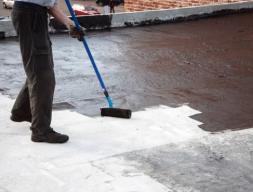Damp proofing or Damp-Proof

Dampness problems are among the most frequent problems encountered in residences.
Damp proofing or Damp-Proof in construction is a type of moisture control applied to building walls and floors to prevent moisture from passing into the interior spaces. Dampness problems are among the most frequent problems encountered in residences.
Structural dampness is the presence of unwanted moisture in the structure of a building, either the result of intrusion from outside or condensation from within the structure. A high proportion of damp problems in buildings are caused by ambient climate dependent factors of condensation and rain penetration.
Rising Damp Signs
- Damp Or Wet Patches Appearing On Walls. ...
- Salts Within The Plaster | One of the Most Frequent Signs of Rising Damp. ...
- Flaky Or Bubbling Plaster. ...
- Rotting Skirting Boards And Flooring. ...
- Damp and Musty Smell. ...
- Rusting Iron And Steel Fasteners. ...
- Crumbling Bricks and Mortar Between Bricks.
Falling damp is the ingress of moisture from the top of a property. Falling damp is caused by building defects and poor maintenance; for example, roof defects, leaking, blocked guttering and down pipes.
At Wentworth Construction the most effective or recommended method/way of treating both rising or falling damp is by removing the affected plaster work in its entirety and then proceed to plaster a thin slurry mix of latseal dampproofer or similar product and allowing it 24hours to dry; Replaster the walls thereafter.


